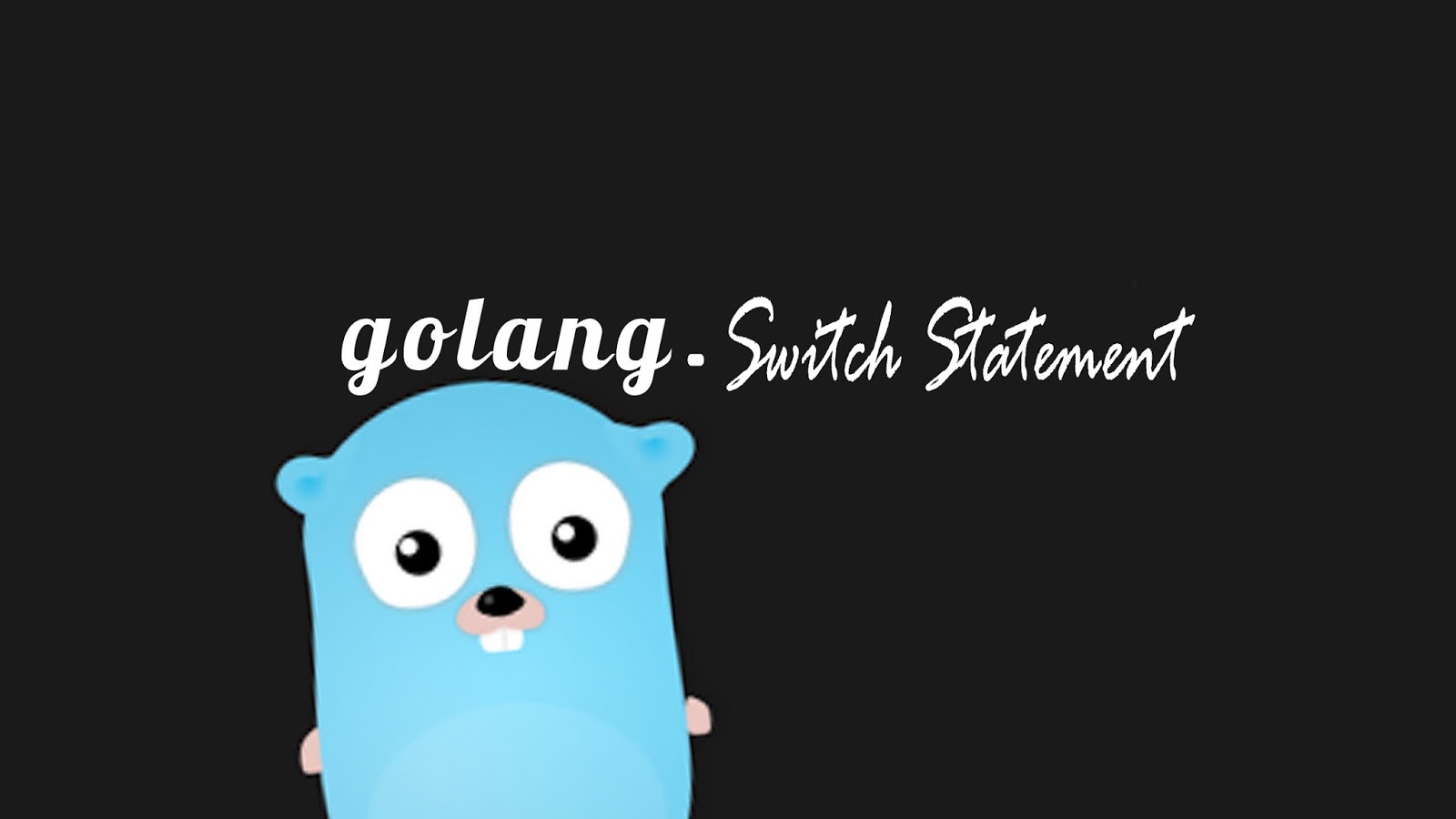Basics Of GoLang (part-1)
I am working at Gojek as a Frontend Engineer, and using GO for backend and wanted to learn something new, So started looking forward to exploring some new technology.
Why I picked GO❓ 🤔
It’s because I wanted to learn something in backend by which I can build web apps end to end. In GO we can do anything, it's simple to learn and very semantic. Also, I can contribute in my code base 😋
GO is an open source programming language that makes it easy to build simple, reliable, and efficient software.
Features: 🤓
- Fast compile times
- Ease of development
- Fast execution

This blog contains content only for beginners, as it has basic concepts of GO. I have separated this course in few parts:
These are the topics which I'm going to cover in the first part:
- Go Setup
- Printing
- Types
- Variables
- Control Statement
1️⃣ Go Setup 🖥
Install GO ,
After installing GO into the system, verify GO was installed successfully
We can check path of GO by:
$ which go
/usr/local/go/bin/goAdd these to your .bash_profile:
export GOPATH=#HOMEexport GOBIN=#GOPATH/binexport PATH=$PATH:$GOBINVerify the above changes by:
$ echo $PATH
/Users/suprabha/.nvm/versions/node/v10.15.3/bin:/usr/local/bin:/usr/bin:/bin:/usr/sbin:/sbin:/usr/local/go/bin:/usr/local/go/binCheck version:
$ go version
go version go1.12.7 darwin/amd64Few weird parts in compared to JS are listed below: 😮
- Loop:
do whileloop doesn’t exist in GO. - What fmt package return? => It returns number of bytes and an error.
- Error handling It's explicit. We have to do it manually. Error are like value, we have to decide what we have to do with that value.
- There should be only one main function, which should have one main func function only.
- GO is multi threaded.
- For experiment and printing, you can use this link
2️⃣ Printing 🖨
Print: Printing to STDOUT
The most common use of formatting is to print to a terminal window through STDOUT.
Example:fmt.Print() ⇒ prints output to the stdout console
fmt.Println() ⇒ Returns number of bytes and an error
fmt.Printf() ⇒ Allows users to print formatted data
fmt.Println("Hello, Suprabha") // Hello Worldfmt.Print("Hello, Suprabha") // Hello, Suprabha (cursor in last). Will output to the terminal with the cursor immediately after the last spacevar mystring = "Hello world"fmt.Printf("The string is %s", mystring) // The string is Hello worldFprint: Printing to io.Writer
Need to print to a non-STDOUT output (such as STDERR or a buffer) then you can use the Fprint functions. The “F” in these functions comes FILE which was the argument type used in C’s fprintf() function.
Use Fprint to write things to the file.
Example:fmt.Fprint() ⇒ Prints the output to an external source (file, browser)
fmt.Fprintln() ⇒ Does not print to the stdout console
f, _ := os.Create("C:\\programs\\file.txt")w := bufio.NewWriter(f)fmt.Fprint(w, "Hello") // writing filesSprint: Formatting to a string
Example:fmt.Sprint() ⇒ Stores output on a character buffer
fmt.Sprintln() ⇒ Does not print to stdout console
fmt.Sprintf() ⇒ Returns the string you want to print
product := 42myString := fmt.Sprintf("Product with ID '%d' could not be found.", productConversion characters ๏
Conversion characters tell Golang how to format different data types. Some of the most commonly used specifiers are:
- v – formats the value in a default format
- d – formats decimal integers
- g – formats the floating-point numbers
- b – formats base 2 numbers
- o – formats base 8 numbers
- t – formats true or false values
- s – formats string values
var mystring = "Hello Suprabha"fmt.Printf("The string is %s", mystring)var mydata int = 14 fmt.Printf("The decimal value is %d", mydata)var mydata float32 = 8.11fmt.Printf("The floating point is %g", mydata)3️⃣ Types

1. Integer
The integer can be used based on memory. Like how much memory we want to allocate for some variable. Integer can be negative or positive value.
Type Name: int, int8, int16, int32, int64Below Type name indicates unassigned integer which value is gonna assigned above 0, 0.
Type Name: unit, uint8, uint16, uint32, uint64var age int = 212. Float
It helps us to manage how precisely we want to have decimals.
Type Name: float32, float64var result float64 = 4.03. String ""
Everytime we write in double quotes.
Type Name: stringvar name string = 'supi'4. Boolean
It's for conditional operator.
Type Name: boolvar canWalk bool = age > 21It allows to dig into the syntax a little bit and ask some question about what's the data type.
import ("reflect")// check type herefmt.Println(reflect.TypeOf("Hello")) // string// convert type:var a = 5;fmt.Println(reflect.TypeOf(a * 5.5)) // it will throw an ERRORfmt.Println(reflect.TypeOf(float64(a) * 5.5)) // It will fixed, as we converted a(int) to float4️⃣ Variables 🤠
How we assign variables❓🤔
var name string = 'supi' //1. here, we defined the type, so later we can not change itvar name = 'supi' //2.var name string // 3. we havent written anything on right side, its like let in JSvar name, name1 = "suprabha", "supi" // 4.fmt.Println(name, name1) // suprabha supiname := "supi" //5.here we dropped the var, this is function blocked.ByDefault, data type has some value, like integer has 0, string has "", boolean get false, and float get 0.0
var a intfmt.Println(a) // 05️⃣ Control Statement

1. If-Else Statement
if someVar > 100 { fmt.Println("Greater than 100")} else if someVar == 100 { fmt.Println("Equals 100")} else { fmt.Println("Less than 100")}Assignment operator with shorthand syntax:
err := someFunction()In above snippet, err is representing error. Assigning a variable which is gonna error to some function, So if this function returns an error, we will save it to this variable and we can use it.
if err != nil { fmt.Println(err.Error())}If err is not nil, means something has happened.
if err := someFunction(); err != nil { fmt.Println(err.Error())}Above snippet, allows us to both define a variable and then check about the variable in a conditional sense before executing code within curly braces. So, here err, is scoped in if block statement, so we can not use err variable any where else.
2. Switch Statements

var city string
switch city { case "Des Moines": fmt.Println("You live in Iowa") case "Minneapolis,", "St Paul": // either city is present then will come here fmt.Println("You live in Minnesota") case "Madison": fmt.Println("You live in Wisconsin") default: fmt.Println("You're not from around here.")}We can also add conditional statement in case, for example case 9 < 10
var city string
switch city { case "Des Moines": fmt.Println("You live in Iowa") fallthrough // even city is Des Moines, and its comes here, it will continue going down case "Minneapolis,", "St Paul": // either city is present then will come here fmt.Println("You live in Minnesota") default: fmt.Println("You're not from around here.")}3. For Loops

It's looks like similar to JS loop. And only here, we will see semicolon(;) in GO.
//option 1for i := 1; i <= 100; i++ { fmt.Println(i)}
// option 2// we can kill both of the statemnt left and right, it most look like while.i := 1
for i <= 100 { // until i is not less equal to 100, print i fmt.Println(i) // This will behave like a while loop i += 1}
// option 3// Really powerful version of for loop uses the range keyword.var mySentence = "This is a sentence"// here index, letter are getting assigned to whatever's on the right side. So, index and letter is gettibg assigned to **range** keyword// i.e . we are iterating over mySentence, which is stringfor index, letter := range mySentence { fmt.Println("Index:", index, "Letter:", letter)}// here, the o/p will show index: 0,1,2 and letter will also be in numberIf we set some value then we have to use it otherwise Go, will throw an error.
Example:for index, letter := range mySentence { fmt.Println("Letter:", letter) // will throw error, index declared but not used}So, in that scenario, where we need to use the syntax but not variable name, then we can define with _
for _, letter := range mySentence { fmt.Println("Letter:", letter) // will throw error, index is not used}In this section, we learnt how to setup GO, Printing methods, different Types, how to create Variable and usage, Control Statement where covered if else, switch and for loop.
Next section we are going to discuss following topics: Functions, Array, Toolkit, Packages, Unit Testing and Structs.
I hope you found this blog helpful, If you have any question please reach out to me on @suprabhasupi 😋